Food trends that must be stopped
From doctored dishes to cocktail flubs, a top critic sounds off on the 10 worst practices. One involves tap water

| James Augustine Aloysius Joyce (1882-1941) |
|
Irish novelist, noted for his experimental use of language in such works as ULYSSES (1922) and FINNEGANS WAKE (1939). During his career Joyce suffered from rejections from publishers, suppression by censors, attacks by critics, and misunderstanding by readers. From 1902 Joyce led a nomadic life, which perhaps reflected in his interest in the character of Odysseus. Although he spent long times in Paris, Trieste, Rome, and Zürich, with only occasional brief visit to Ireland, his native country remained basic to all his writings.
"But when the restraining influence of the school was at a distance I began to hunger again for wild sensations, for the escape which those chronicles of disorder alone seemed to offer me. The mimic warfare of the evening became at last as wearisome to me as the routine of school in the morning because I wanted real adventures to happen to myself. But real adventures, I reflected, do not happen to people who remain at home: they must be sought abroad." (from Dubliners) James Joyce was born in Dublin as the son of John Stanislaus Joyce, impoverished gentleman, who had failed in a distillery business and tried all kinds of professions, including politics and tax collecting. Joyce's mother, Mary Jane Murray, was ten years younger than her husband. She was an accomplished pianist, whose life was dominated by the Roman Catholic Church and her husband. In spite of the poverty, the family struggled to maintain solid middle-class facade.
From the age of six Joyce, was educated by Jesuits at Clongowes Wood College, at Clane, and then at Belvedere College in Dublin (1893-97). Later the author thanked Jesuits for teaching him to think straight, although he rejected their religious instructions. At school he once broke his glasses and was unable to do his lessons. This episode was recounted in A PORTRAIT OF THE ARTIST AS A YOUNG MAN (1916). In 1898 he entered the University College, Dublin, where he found his early inspirations from the works of Henrik Ibsen, St.Thomas Aquinas and W.B. Yeats. Joyce's first publication was an essay on Ibsen's play When We Dead Awaken. It appeared in Fortnightly Review in 1900. At this time he began writing lyric poems.
After graduation in 1902 the twenty-year-old Joyce went to Paris, where he worked as a journalist, teacher and in other occupations in difficult financial conditions. He spent in France a year, returning when a telegram arrived saying his mother was dying. Not long after her death, Joyce was traveling again. He left Dublin in 1904 with Nora Barnacle, a chambermaid (they married in 1931), staying in Pola, Austria-Hungary, and in Trieste, which was the world’s seventh busiest port. Joyce gave English lessons and talked about setting up an agency to sell Irish tweed. Refused a post teaching Italian literature in Dublin, he continued to live abroad.
The Trieste years were nomadic, poverty-stricken, and productive. Joyce and Nora loved this cosmopolitan port city at the head of the Adriatic Sea, where they lived in a number of different addresses. During this period Joyce wrote most of DUBLINERS (1914), all of A Portrait of the Artist as a Young Man, the play, EXILES (1918), and large sections of Ulysses. Several of Joyce's siblings joined them, and two children, Giorgio and Lucia, were born. The children grew up speakin the Trieste dialect of Italian. Joyce and Nora stayed together althoug Joyce fell in love with Anny Schleimer, the daughter of an Austrian banker, and Roberto Prezioso, the editor of the newspaper Il Piccolo della Sera, tried to seduce Nora. After a short stint in Rome in 1906-07 as a bank clerk ended in illness, Joyce returned to Trieste.
In 1907 Joyce published a collection of poems, CHAMBER MUSIC. The title was suggested, as the author later stated, by the sound of urine tinkling into a prostitute's chamber pot. The poems have with their open vowels and repetitions such musical quality that many of them have been made into songs. "I have left my book, / I have left my room, / For I heard you singing / Through the gloom." Joyce himself had a fine tenor voice; he liked opera and bel canto.
In 1909 Joyce opened a cinema in Dublin, but this affair failed and he was soon back in Trieste, still broke and working as a teacher, tweed salesman, journalist and lecturer. In 1912 he was in Ireland, trying to persuade Maunsel & Co to fulfill their contract to publish Dubliners. The work contained a series of short stories, dealing with the lives of ordinary people, youth, adolescence, young adulthood, and maturity. The last story, 'The Dead', was adapted into screen by John Huston in 1987.
It was Joyce's last journey to his home country. However, he had became friends with Ezra Pound, who began to market his works. In 1916 appeared Portrait of the Artist as a Young Man, an autobiographical novel. It apparently began as a quasi-biographical memoir entitled Stephen Hero between 1904 and 1906. Only a fragment of the original manuscript has survived. The book follows the life of the protagonist, Stephen Dedalus, from childhood towards maturity, his education at University College, Dublin, and rebellion to free himself from the claims of family and Irish nationalism. Stephen takes religion seriously, and considers entering a seminary, but then also rejects Roman Catholicism. "-Look here, Cranly, he said. You have asked me what I would do and what I would not do. I will tell you what I will do and what I will not do. I will not serve that in which I no longer believe, whether it call itself my home, my fatherland, or my church: and I will try to express myself in some mode of life or art as freely as I can and as wholly as I can, using my defence the only arms I allow myself to use - silence, exile, and cunning." At the end Stephen resolves to leave Ireland for Paris to encounter "the reality of experience". He wants to establish himself as a writer.
There once was a lounger named Stephen At the outset of the First World War, Joyce moved with his family to Zürich, where Lenin and the poet essayist Tristan Tzara had found their refuge. Joyce's WW I years with the legendary Russian revolutionary and Tzara, who founded the dadaist movement at the Cabaret Voltaire, provide the basis for Tom Stoppard's play Travesties (1974).
In Zürich Joyce started to develop the early chapters of Ulysses, which was first published in France, because of censorship troubles in the Great Britain and the United States, where the book became legally available 1933. The theme of jealousy was based partly on a story a former friend of Joyce told: he claimed that he had been sexually intimate with the author's wife, Nora, even while Joyce was courting her. Ulysses takes place on one day in Dublin (June 16, 1904) and reflected the classic work of Homer (fl. 9th or 8th century BC?).
The main characters are Leopold Bloom, a Jewish advertising canvasser, his wife Molly, and Stephen Dedalus, the hero from Portrait of the Artist as a Young Man. They are intended to be modern counterparts of Telemachus, Ulysses, and Penelope. Barmaids are the famous Sirens. One of the models for Bloom was Ettore Schmitz (Italo Svevo), a novelist and businessman who was Joyce's student at the Berlitz school in Trieste. The story, using stream-of-consciousness technique, parallel the major events in Odysseus' journey home. However, Bloom's adventures are less heroic and his homecoming is less violent. Bloom makes his trip to the underworld by attending a funeral at Glasnevin Cemetary. "We are praying now for the repose of his soul. Hoping you're well and not in hell. Nice change of air. Out of the fryingpan of life into the fire of purgatory." The paths of Stephen and Bloom cross and recross through the day. Joyce's technical innovations in the art of the novel include an extensive use of interior monologue; he used a complex network of symbolic parallels drawn from the mythology, history, and literature.
From 1917 to 1930 Joyce endured several eye operations, being totally blind for short intervals. (According to tradition, Homer was also blind.) In March 1923 Joyce started in Paris his second major work, Finnegans Wake, suffering at the same time chronic eye troubles caused by glaucoma. The first segment of the novel appeared in Ford Madox Ford's transatlantic review in April 1924, as part of what Joyce called Work in Progress.Wake occupied Joyce's time for the next sixteen years - its final version was completed late in 1938. A copy of the novel was present at Joyce's birthday celebration on February 1939.
Joyce's daughter Lucia, born in Trieste in 1907, became Carl Jung's patient in 1934. In her teens, she studied dance, and later The Paris Timespraised her skills as choreocrapher, linguist, and performer. With her father she collaborated in POMES PENYEACH (1927), for which she did some illustrations. Lucia's great love was Samuel Beckett, who was not interested in her. In the 1930s, she started to behave erratically. At the Burghölz psychiatric clinic in Zurich, where Jung worked, she was diagnosed schizophrenic. Joyce was left bitter at Jung's analysis of his daughter - Jung thought she was too close with her father's psychic system. In revenge, Joyce played in Finnegans Wake with Jung's concepts of Animus and Anima. Lucia died in a mental hospital in Northampton, England, in 1982.
After the fall of France in WWII, Joyce returned to Zürich, where he died on January 13, 1941, still disappointed with the reception of Finnegans Wake. The book was partly based on Freud's dream psychology, Bruno's theory of the complementary but conflicting nature of opposites, and the cyclic theory of history of Giambattista Vico (1668-1744).
Finnegans Wake was the last and most revolutionary work of the author. There is not much plot or characters to speak of - the life of all human experience is viewed as fragmentary. Some critics considered the work masterpiece, though many readers found it incomprehensible. "The only demand I make of my reader," Joyce once told an interviewer, "is that he should devote his whole life to reading my works." When the American writer Max Eastman asked Joyce why the book was written in a very difficult style, Joyce replied: "To keep the critics busy for three hundred years." The novel presents the dreams and nightmares of H.C.Earwicker (Here Comes Everywhere) and his family, the wife and mother Anna Livia Plurabelle, the twins Shem/Jerry and Shaun/Kevin, and the daughter Issy, as they lie asleep throughout the night. In the frame of the minimal central story Joyce experiments with language, combines puns and foreign words with allusions to historical, psychological and religious cosmology. The characters turn up in hundreds of different forms - animal, vegetable and mineral. Transformations are as flexible as in Ovid'sMetamorphoses. The last word in the book is 'the', which leads, by Joyce's ever recurrent cycles, to the opening word in the book, the eternal 'riverrun.'
Although the events are set in the Dublin suburb of Chapelizod, the place is an analogy for everywhere else. Wake's structure follows the three stages of history as laid out by Vico: the Divine, the Heroic, and Human, followed period of flux, after which the cycle begins all over again: the last sentence in the work runs into the first. The title of the book is a compound of Finn MaCool, the Irish folk-hero who is supposed to return to life at some future date to become the savior of Ireland, and Tim Finnegan, the hero of music-hall ballad, who sprang to life in the middle of his own wake.
For further reading: James Joyce by Herbert Gorman (1939); Introducing James Joyce, ed. by T.S. Eliot (1942); Stephen Hero, ed. by Theodore Spencer (1944); James Joyce by W.Y. Tindall (1950); Joyce: The Man, the Reputation, the Work by M. Maglaner and R.M. Kain (1956); Dublin's Joyce by Hugh Kenner (1956); My Brtother's Keeper by S. Joyce (1958); James Joyceby Richard Ellmann (1959); A Readers' Guide to Joyce (1959); The Art of James Joyce by A.W. Litz (1961); Surface and Symbol: The Consistency of James Joyce's Ulysses by R.M. Adams (1962); J. Joyce-again's Finnegans Wake by B. Benstock (1965);James Joyce's 'Ulysses': Critical Essays, ed. by Clive Hart and David Hayman (1974); A Conceptual Guide to 'Finnegans Wake' by Michael H. Begnal and Fritz Senn (1974); James Joyce: the Citizen and the Artist by C. Peake (1977); James Joyce by Patrick Parrinder (1984); Joyce's Anatomy of Culture by Cheryl Herr (1986); Joyce's Book of the Dark: 'Finnegans Wake by John Bishop (1986); Reauthorizing Joyce by Vicki Mahaffey (1988); 'Ulysses' Annotated by Don Gifford (1988); An Annotated Critical Bibliography of James Joyce, ed. by Thomas F. Staley (1989); The Cambridge Companion to James Joyce, ed by Derek Attridge (1990); Joyce's Web by Margot Norris (1992); James Joyce's 'A Portrait of the Artist as a Young Man' by David Seed (1992);Critical Essays on James Joyce's Finnegan's Wake ed. by Patrick A. McCarthy (1992); James Joyce and the Language of History: Dedalus's Nightmare by Robert E. Spoo (1994), Gender in Joyce, ed. by Jolanta W. Wawrzycka (1997) ; A Companion to James Joyce's Ulysses, ed. by Margot Norris (1999); Toiseen maailmaan. James Joycen novelli "Kuolleet" kirjallisuustieteen kohteenaby Pekka Vartiainen (1999); The Years of Bloom: James Joyce in Trieste, 1904-1920 by John McCourt (2000) - See also: Little Blue Light, Samuel Beckett, William Butler Yeats, Marcel Proust Selected works:
|


Stately, plump Buck Mulligan came from the stairhead, bearing a bowl of lather on which a mirror and a razor lay crossed. A yellow dressinggown, ungirdled, was sustained gently behind him on the mild morning air. He held the bowl aloft and intoned:
-Introibo ad altare Dei.
Halted, he peered down the dark winding stairs and called out coarsely:
--Come up, Kinch! Come up, you fearful jesuit!
--Ireland, they say, has the honour of being the only country which never persecuted the jews...do you know why? [Mr. Deasy asked Stephen]
--Because she never let them in, Mr. Deasy said solemnly.
A coughball of laughter leaped from his throat dragging after it a rattling chain of phlegm. [U30/437]
Then they sang the second verse of the Tantum Ergo and Canon O'Hanlon got up again and censed the Blessed Sacrament and knelt down and he told Father Conroy that one of the candles was going to set fire to the flowers and Father Conroy got up and settled it all right and she could see the gentleman winding his watch and listening to the works and she swung her leg more in and out. [U296/552]
And then a rocket sprang and bang shot blind blank and O! and everyone cried O! O! in raptures and it gushed out of it a stream of rain gold hair threads and they shed and ah! they were all greeny dew stars falling with golden, O so lovely, O, soft, sweet, soft! [U300/736]
Mr. Bloom raised a cake to his nostrils. Sweet lemony wax. --I'll take this one, he said. That makes three and a penny. [U69/512]
The superior, the very reverend John Conmee S.J. reset his smooth watch in his interior pocket as he came down the presbytery steps. Five to three.
He was passing at that moment before the Jesuit house in Gardiner Street and wondered vaguely which window would be his if he ever joined the order. [PA Chapter 4]
His soul swooned slowly as he heard the snow falling faintly through the universe and faintly falling, like the descent of their last end, upon all the living and the dead.
*Before Nelson's Pillar trams slowed, shunted, changed trolley, started for Blackrock, Kingstown and Dalkey...begins the Aeolus chapter. Right and left parallel clanging ringing a doubledecker and a singledeck moved from their railheads, swerved to the down line, glided parallel.[U 96/1]
Pineapple rock, lemon platt, butter scotch. A sugarsticky girl shovelling scoopfuls of creams for a christian brother. Some school treat. Bad for their tummies. Lozenge and comfit manufacturer to His Majesty the King. God. Save. Our. Sitting on his throne sucking red jububes white.
A sombre Y.M.C.A. man, watchful among the warm sweet fumes of Graham Lemon's, placed a throwaway in a hand of Mr. Bloom.[U 124/1]
Hot mockturtle vapor and steam of newbaked jampuffs rolypoly poured out of Harrison's. The heavy noonreek tickled the top of Mr. Bloom's gullet. [U 129/232]
Before the huge high door of the Irish house of Parliament a flock of pigeons flew. Their little frolic after meals. Who will we do it on? I pick the fellow in black.
Grafton Street gay with awnings lured his senses. Muslin prints, silkdames and dowagers, jingle of harnesses, hoofthuds lowringing in the baking causeway. [U 137/614]
...fresh clean bread, with relish of disgust pungent mustard, the feety savour of green cheese. Sips of his wine soothed his palate. Not logwood that... [U 142/818]
But the trees in Stephen's Green were fragrant of rain and the rainsodden earth gave forth its mortal odour, a faint incense rising upward through the mould from many hearts. The soul of the gallant venal city which his elders had told him of had shrunk with in a moment when he entered the sombre college he would be conscious of a corruption other than that of Buck Egan and Burnchapel Whaley. [PA chapter 5]
Discussing these and kindred topics they made a beeline across the back of the Customhouse and passed under the Loop Line bridge where a brazier of coke burning in front of a sentrybox or something like one attracted their rather lagging footsteps. [U503/100]
__What did you buy that for? he asked. To learn French? She nodded, reddening and closing tight her lips...
__Here, Stephen said. It's all right. Mind Maggy doesn't pawn it on you. I suppose all my books are gone.
__Some, Dilly said. We had to.
She is drowning. Agenbite. Save her. Agenbite. All against us. She will drown me with her, eyes and hair. Lank coils of seaweed hair around me, my heart, my soul. Salt green death.
We.
Agenbite of inwit. Inwit's agenbite.
Misery! Misery!
*Bronze by gold heard the hoofirons, steelyringing.
Imperthnthn thnthnthn.
Chips, picking chips off rocky thumbnail, chips.
Horrid! And gold flushed more.
A husky fifenote blew.
Blew.Blue bloom is on the.
Goldpinnacled hair.
....[U 210/1]
riverrun, past Eve and Adam's, from swerve of shore to bend of bay, brings us by a commodius vicus of recirculation back to Howth Castle and Environs.[FW 1]
Away a lone a last a loved a long the [ FW 628/15]
Mr. Power's soft eyes went up to the apex of the lofty cone. __He's at rest, he said, in the middle of his people, old Dan O'. But his heart is buried in Rome. How many broken hearts are buried here, Simon! [U86/642]
The Botanic Gardens are just over there. It's the blood sinking in the earth gives new life. Same idea those jews they said killed the christian boy. Every man his price. Well preserved fat corpse, gentleman, epicure, invaluable for fruit garden. A bargain. [U 89/770]
The gates glimmered in front: still open. Back to the world again. Enough of this place. Brings you a bit nearer every time. Last time I was here was Mrs. Sinico's funeral. [U 94/996]
William Humble, earl of Dudley, and Lady Dudley, accompanied by lieutenant colonel Heseltine, drove out after luncheon from the viceregal lodge...
The cavalcade passed out by the lower gate of Phoenix park saluted by obsequious policemen and proceeded past Kingsbridge along the northern quays. The viceroy was most cordially greeted on his way through the metropolis. [U 207/1176]
Mind your hats goan in! Now yiz are in the Willingdone Museyroom. This is a Prooshious gunn. this is a ffrinch. Tip. This is the flag of the Prooshious. Saloos the Crossgunn! Up with your pike and fork! Tip. (Bullsfoot! Fine!) This is the triplewon hat of Lipoleum. Tip Lipoleumhat. This is the Willingdone on his same white harse, the Cokenhape...[FW 8/9-18].
of having behaved with ongentilmensky immodus opposite a pair of dainty maidservants in the swoolth of the rushy hollow whither, or so the two gown and pinners pleaded,...but whose published combinations of silkinlaine testimonies are, where not dubiously pure, visibly divergent, as wapt from wept, on minor points touching the intimate nature of this, a first offence in vert or venison which was admittedly an incautious but, at its wildest, a partial exposure with such attenuating circumstances (garthen gaddeth green hwere sokeman brideth girling) as an abnormal Saint Swithin's summer and, Jesses Rosasharon!) aripe occasion to provoke it. [FW 34/19-30]
Both works are contained in The Portable James Joyce / with an introduction by Harry Levin. New York, Viking Press, 1966. This edition is recommended to the traveler. 820.81J
- James Joyce, Dubliners
- James Joyce, A Portrait of the Artist as a Young Man
Also in the Visitors Reports of The New York Society Library, James Joyce in the New York Society Library by Marylin Bender Altschul, February 1996.
- James Joyce, Ulysses: The corrected text edited by Hans Walter Gabler with Wolfhard Steppe and Claus Melchior. New York, Random House, 1986. FJ
- James Joyce, Finnegans Wake. New York, Viking Press, 1939. FJ
- Richard Ellmann, James Joyce, revised edition, New York, Oxford University Press, 1982. 92 J89E
- Brenda Maddox, Nora: The Real Life of Molly Bloom, Boston, Houghton Mifflin, 1988. 92 J892M
- A. Nick Fargnoli and Michael P. Gillespie, James Joyce A to Z, New York, Facts on File Inc. 1995. 823J
- Patricia Hutchins, James Joyce's Dublin. London, The Grey Walls Press, 1950. 92 J89H
James Joyce - Pagina 290door Robert H. Deming - Literary Criticism - 1997135- Yeats and the Dublin Philosophical Society 1923 Extract from an unsigned
... [Yeats] One writer the Auditor [Mr. Beare] had mentioned—James Joyce—was ... |
James Joyce and the Fabrication of an Irish Identity - Pagina 88door Michael Patrick Gillespie - National characteristics, Irish, in literature - 2001 - 200 pagina’sAs a Dublin writer taking a complex and—by the standards of his own day—cosmopolitan
... of an Irish national literature, Joyce found himself an exile or, ... |
The Cambridge Companion to James Joyce - Pagina 35door Derek Attridge - Literary Criticism - 2004 - 312 pagina’sHowever, Joyce, like Wilde and Shaw, was a Dublin writer. For him, as for them,
Ireland was a negative idea, a place which threatened the artist's freedom ... |
A Portrait of the Artist as a Young Man - Pagina 11door James Joyce - Fiction - 1991 - 256 pagina’sThe same principle, Joyce seems to be claiming, will apply to any human ...
But the novel about a writer growing up in Dublin was never far from his ... |
The Word According to James Joyce: Reconstructing representation - Pagina 21door Cordell D. K. Yee - Literary Criticism - 1997 - 171 pagina’sIn Dublin, Joyce has found a concrete universal. The stories contain concrete
particulars that point to a larger idea. Dubliners thus satisfies Aristotle's ... |
James Joyce A to Z: The Essential Reference to the Life and Work - Pagina 59door A. Nicholas Fargnoli, Michael Patrick Gillespie - Literary Criticism - 1996 - 320 pagina’sDublin Capital city of Ireland and Irish Sea port, where James Joyce was born
and grew up. ... writer has yet presented Dublin to the world. ... |
James Joyce - Pagina 208door Richard Ellmann - Novelists, Irish - 1983 - 887 pagina’sIn a letter of October 15, 1905, to Grant Richards, he emphasized the same
intention: 'I do not think that any writer has yet presented Dublin to the world. ... |
James Joyce: A Definitive Biography - Pagina 242door Herbert Sherman Gorman - Authors, Irish - 1941 - 354 pagina’sLater Joyce discovered that the astute Mr. M proposed to shoot his picture ...
here and briefly note the various rencontres the Dublin writer had with this ... |
Dublin a Cultural History - Pagina 164door Siobhán Marie Kilfeather, Inc NetLibrary - 2005Richard Ellmann, James Joyce James Joyce, graduate of University College Dublin,
sometime music student, and sometime schoolmaster, and an aspiring writer ... |
James Joyce: A Short Introduction - Pagina 3door Michael Seidel - Literary Criticism - 2002 - 176 pagina’sJoyce never recovered. (James Joyce: Interviews and Recollections, p. ...
poring over etymological dictionaries and wandering Dublin streets for unusual or ... |
James Joyce and Nationalism - Pagina 187door Emer Nolan - Literary Criticism - 1995Tradition and the Irish Writer (Dublin: Dolmen Press, 1970), p. 65. 21 Ellmann,
James Joyce, p. 102. 22 See Max Horkheimer and Theodor Adorno, 'Odysseus or ... |
Dublin - Pagina 31door Fionn Davenport, Martin Hughes - Travel - 2004 - 264 pagina’sJennifer Johnston (1930—) was the most well-known female writer from Dublin in
... become a hugely successful novelist and • Dubliners, James Joyce scholar. ... |
Dubliners - Pagina xidoor James Joyce - Fiction - 1993 - 316 pagina’sThe one was entirely personal to the Joyce family, the other was an event ...
but to a Dublin of mean dwellings, low public houses and slum tenements with ... |
A Portrait of the Artist As a Young Man and Dubliners - Pagina 421door James Joyce - Fiction - 2004 - 464 pagina’sJAMES JOYCE Comments The Dublin papers will object to my stories as to a ...
Like Swift and another living Irish writer, Mr. Joyce has a cloacal obsession. ... |
James Joyce and the Language of History: Dedalus's Nightmare - Pagina 27door Robert Spoo - Literary Criticism - 1994 - 208 pagina’sOne reason, surely, why Dublin was beginning to seem more dear than dirty ...
were worse microcosms than Dublin to which a writer might consecrate his art. ... |
The Biography Book: A Reader's Guide to Nonfiction, Fictional, and Film ... - Pagina 218door Daniel S. Burt - Biography & Autobiography - 2001 - 640 pagina’sThis scholarly edition collects both letters by and to Joyce and provides an
essential window on the writer's personality. Selected Letters of James Joyce. ... |
Saturday Reviewdoor Bernard Augustine De Voto - American literature - 1952Obviously, in the case of a writer like James Joyce, his books could not bring
... part studies one pursued to get ai sity degree in modern literal Dublin. ... |
Troubled Histories, Troubled Fictions - Pagina 96door Theo D'haen, José Lanters, C. C. Barfoot, Theo d' Haen - 1995James Joyce, Ulysses: A Critical and Synoptic Edition, 3 vols, ed. ... will probably
not be duplicated in the case of the new Dublin writer, James Joyce, ... |
The Cambridge Introduction to James Joyce - Pagina 32door Eric Bulson - Literary Criticism - 2006 - 152 pagina’sDublin was the setting for virtually all his works. ... of the twentieth century:
I do not think that any writer has yet presented Dublin to the world. ... |
The Irish Writer and the World - Pagina 41door Declan Kiberd - Literary Criticism - 2005 - 342 pagina’s14 James Joyce, A Portrait of the Artist as a Young Man (London, 1960), p. 183.
... 18 Behan's Irish poems were published in Comhar (Dublin, April 1964). ... |
|
|
Makers of Modern Culture - Pagina 256door Justine Wintle - Social Science - 2002234 JOYCE, James Augustine 1882-1941 Irish writer James Joyce was the greatest
... Joyce was born at Rathgar, Dublin, on 2 February 1882, into a fairly ... |
The Celtic Master: Contributions to the First James Joyce Symposium Held in ... - Pagina 9door Donagh MacDonagh - Civilization, Celtic, in literature - 1969 - 57 pagina’sOthers again, affecting to dismiss the later work, will profess to see Mr.
Joyce as a French writer of the school of Flaubert. In this Gresham hotel, ... Fragmentweergave - Over dit boek - Aan mijn bibliotheek toevoegen
|
James Joyce and the Israelites - Pagina 87door Seamus Finnegan - Literary Criticism - 1995 - 135 pagina’sIn 1982 when JAMES JOYCE & THE ISRAELITES was in production at the Lyric Theatre
... The Irish Attache was polite and dutiful but no invitation to Dublin in ... |
James Joyce and the Act of Reception: Reading, Ireland, Modernism - Pagina 108door John Nash - Literary Criticism - 2006 - 230 pagina’sA certain James F. Conmee wrote to Joyce from Dublin in 1928 to enquire ...
to the familiar caricature of the 'greatly misunderstood' writer suffering form ... |
Writing the City: Urban Visions and Literary Modernism - Pagina 156door Desmond Harding - Literary Criticism - 2003 - 236 pagina’sSee also Torchiana, "Joyce and Dublin," The Irish Writer and the City 52-63 and
David Pierce, James Joyce's Ireland (New Haven: Yale UP, 1992). ... |
James Joyce: Two Decades of Criticism - Pagina 285door Eugène Jolas - Ireland - 1963 - 486 pagina’s... VIVIAN MERCIER DUBLIN UNDER THE JOYCES I do not think that any writer has yet
... 1 James Joyce in a letter to Grant Richards, December 3, 1905, ... Fragmentweergave - Over dit boek - Aan mijn bibliotheek toevoegen
|
Magill's Literary Annual, 1987 - Pagina 418door Magill, Frank Northen, 1907- - Literary Criticism - 1987 - 1026 pagina’s$30.00 Type of work: Biography Time: 1882-1915 Locale: Dublin, Paris, Trieste,
Rome A biography of the Irish writer James Joyce dealing principally with his ... |
Ireland - Pagina 102door Tom Downs - Travel - 2004 - 716 pagina’sTOURS Dublin is an easy city to see on foot so a guided walking tour is an ...
Suffolk BLOOMSDAY Six days after meeting her, the writer James Joyce had his ... |
Unicorns - Pagina 187door James Huneker - Literary Criticism - 1917 - 361 pagina’sCHAPTER XVI JAMES JOYCE WHO is James Joyce? is a question that was answered by
John Quinn, who told us that the new writer was from Dublin and at present ... |
Cultural Studies of James Joyce - Pagina 138door R. B. Kershner - Literary Criticism - 2003 - 215 pagina’sambivalences of Joyce's attitude toward “dear dirty Dublin,” it is unclear ...
too numerous dichotomies is Art versus Life—Richard as writer-director, ... |
 James Joyce, ca. 1918 |
|
| Born | 2 February 1882 Rathgar, Dublin, Ireland |
|---|---|
| Died | 13 January 1941 (aged 58) Zürich, Switzerland |
| Occupation | Novelist and Poet |
| Literary movement | Modernism, and imagism |
| Influences | Homer, Aristotle, Dante,Aquinas, Shakespeare,Dujardin, Ibsen, Bruno, Vico,Chekhov |
| Influenced | Beckett, Borges, O'Brien,Rushdie, Eco, Woolf, DeLillo,Burgess, Campbell, Faulkner,Edna O'Brien, Martin Amis,Jamie O'Neill, Orwell |


| “ | ...an American tourist of the most typical variety leaned over my shoulder and sighed: "So many books! What is the definitive one? Is there any?" It was an extremely small book shop, a news agency. I almost replied, "Yes, there are two of them, Ulysses and Finnegans Wake.[43] | ” |
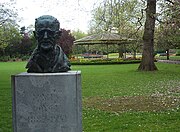








 - Write a review
- Write a review














 AP Ohio Gov. Ted Strickland
AP Ohio Gov. Ted Strickland

















The Dog-Eared Collective: You’re Better Than This »
| Category | Comedy |
|---|---|
| Genres | sketch show |
| Group | Dog-Eared Collective |
| Venue | Underbelly, Cowgate |
| Times | 16:00 |
| Suitability | 14+ |
| Duration | 1 hour |
Anarchic sketch troupe The Dog-Eared Collective change your life. One sketch at a time. Fly on the cape tails of a Diddy Man Vigilante, champion the power of Snooker: The Musical and answer the smell of the wild. Pour homme. Supercharged silliness that will scrub you up the right way. 'Sublimely surreal' **** (Chortle.co.uk) ‘Make no mistake these comedians are very funny’**** (Hairline.org.uk) 'They possess the downright gutsy balls not seen since Jam, the silliness of Bottom and the honest comedy ride that was Smack the Pony.' (Leeds Guide).





| 30 Jul 2011 | 17:00 | Somewhere in Wicklow Town!, Comming Soon! | Free Mini-Fest, Wicklow Town | |||||
| 8 Aug 2011 | 20:15 | Hunter's Square, Edinburgh | Edinburgh Fringe Festival | |||||
| 11 Aug 2011 | 19:45 | Hunter's Square, Edinburgh | Edinburgh Fringe Festival | |||||
| 16 Aug 2011 | 20:15 | Hunter's Square, Edinburgh | Edinburgh Fringe Festival | |||||
| 20 Aug 2011 | 20:15 | Hunter's Square, Edinburgh | Edinburgh Fringe Festival | |||||
| 23 Aug 2011 | 20:15 | Hunter's Square, Edinburgh | Edinburgh Fringe Festival | |||||
| 25 Aug 2011 | 20:15 | Hunter's Square, Edinburgh | Edinburgh Fringe Festival | |||||
| 27 Aug 2011 | 20:15 | Hunter's Square, Edinburgh | Edinburgh Fringe Festival |
Halcyon is a name for a bird of Greek legend which is commonly associated with the kingfisher. The phrase comes from the ancient belief that fourteen days of calm weather were to be expected around the winter solstice - usually 21st or 22nd of December in the Northern Hemisphere. as that was when the halcyon calmed the surface of the sea in order to brood her eggs on a floating nest. The Halcyon days are generally regarded as beginning on the 14th or 15th of December.
Halcyon means calm and tranquil, or 'happy or carefree'. It is rarely used now apart from in the expression halcyon days. The name of the legendary bird was actually alcyon, the 'h' was added in regard to the supposed association with the sea ('hals' in Greek).
The source of the belief in the bird's power to calm the sea originated in a myth recorded by Ovid. The story goes that Aeolus, the ruler of the winds, had a daughter named Alcyone, who was married to Ceyx, the king of Thessaly. Ceyx was drowned at sea and Alcyone threw herself into the sea in grief. Instead of drowning, she was carried to her husband by the wind. The rest of the story is, in a translation of Ovid:
The Gods their shapes to winter-birds translate, But both obnoxious to their former fate. Their conjugal affection still is ty'd, And still the mournful race is multiply'd: They bill, they tread; Alcyone compress'd, Sev'n days sits brooding on her floating nest: A wintry queen: her sire at length is kind, Calms ev'ry storm, and hushes ev'ry wind; Prepares his empire for his daughter's ease, And for his hatching nephews smooths the seas.
The legendary bird is usually identified with the kingfisher. That was also said to nest on the sea and was believed to be able to calm the sea for the seven days before and seven days after the winter solstice.
In 1398, John Trevisa translated Bartholomew de Glanville's De proprietatibus rerum into Middle English:
"In the cliffe of a ponde of occean, Alcion, a see foule, in wynter maketh her neste and layeth egges in vii days and sittyth on brood ... seuen dayes."
In Henry VI, Part I, 1592, Shakespeare refers to halcyon days:
JOAN LA PUCELLE: Assign'd am I to be the English scourge. This night the siege assuredly I'll raise: Expect Saint Martin's summer, halcyon days, Since I have entered into these wars.
Note: Saint Martin's summer is what we now know as an Indian summer.
The kingfisher is associated with other powers relating to the weather. In mediaeval times it was thought that if the dried carcase of a kingfisher was hung up it would always point its beak in the direction of the wind [don't try this at home]. Shakespeare also refers to this in King Lear, 1605:
Bring oil to fire, snow to their colder moods; Renege, affirm, and turn their halcyon beaks With every gale and vary of their masters
Our current use of halcyon days tends to be nostalgic and recalling of the seemingly endless sunny days of youth.
"Halcyon Days" may also refer to:







In 2003, two young lads played together in what was the first incarnation of the band Halcyon Daze. For years, musicians came and went from the group, but the duo of guitarist/singer Podge and drummer Jay was a constant, and formed a solid foundation for Halcyon Daze. As Jay and Podge were both still in school, the band was very on and off, that is until the pair finally realised that music was all they should be doing and quit college to take the band to the next level.
Having already played a lot of the venues on the Dublin gig circuit, they decided it made more sense to do something different to their peers, who seemed to be going around in circles, by playing free gigs on the streets. Instantly the band began to build a real following, and even more so with the addition of Daragh Kinch on bass in October 2010. Since then the group has jammed out on street corners, at college balls, flea markets, parks and even a haunted castle! By playing gigs in England and Scotland, and especially by playing on the streets around Ireland to masses of people, Halcyon Daze has built a reputation as a great live act, and gained an international fanbase that extends accross Europe and even over to the U.S.
In the seven years of the bands existence, Halcyon Daze's sound has morphed and mutated into many different musical styles - spacey psychedelic soundscapes, wahwah and sunshine soaked funk, crunching rock and metal, folk, prog, dance, surf, porn and country music, off the wall improvised jams, and many other things that don't have words - the trio just play whatever comes out of them. The sound has been described as "mesmerizing", "tidal" and "hypnotic" by listeners and it is not unusual to see people breaking into dance or even start screaming at the top of their voice in joy as they pass the band on the street. (No joke)
2011 has been a great year for Halcyon Daze so far, the busy group continue to spread their message on the streets and in venues around Ireland, and in August they will make their first ever festival appearance at the world famous Edinburgh Fringe Festival in Scotland, where earlier in the year they were filmed for a soon to be aired Australian TV show showcasing undiscovered musicians from around the world
David Granato and Cloudye Carew-Reid the founders of Polygranate Films are in Edinburgh to film a TV Special featuring Halcyon Daze, Das Contras, an exciting new Rock Jazz Funk Band from Fifth in Scotland getting ready to tour Australia with Halcyon Daze and other new exciting
talent discovered around
the world by Wijat Records such as Michael Scot Parker (the girl) and her Creature Rock Band from San Francisco,
Ian Pummell's Trip Tyle, Skirlie
a Scotish Folk Band and




































Lynne Hanson talented singer song writer from Ottawa, Canada supporting artist to
New York Folk Rock Star Dar Williams at Dar's Borderline, London gig on the 18th November, 2009
USA's most loved Folk Rock Singer Dar Williams is performing at the following Dates in the UK
You will be sorry if you miss out on seeing Dar Williams on this rare UK
Check out Dar Williams at Club Volaire, Edinburgh in 2007 singing her most loved favourite
"The Baby Sitter" that is bound to requested on this UK tour..we don't think Dar will be allowed home till she sings this one


Lynne Hanson talented singer song writer from Ottawa, Canada supporting
wel known ns muxch loved folk rock artist from New York State, Dar Williams at Borderline, London UK 18-11\-09



Dar Williams singing and telling her amazing zany and entertainiing stories at Borderline, London, Uk 18-11-09
Dar Williams one of the best emerging folk Rock singers this century supported by talented Ottawa, Canada singer songwriter Lynne Hason both sing to a packed house at Borerline, London UK on 18th November, 2009
The crowd went wild and refused to let Dar Williams leave the stage at her Borderline Gigin London on the 18th November, 2009. Dar had to come back to the stage three times to sing and entertain the demanding crowd with an unending appetite for Dar's soulful story telling songs, sung only the way Dar can do it with her magical unique voice. Dar was supported by Lynne Hanson, a very talented singer songwriter from Ottawa, Canada, with a very soulful voice and real stories to tell. Lynne sings porch music that merges universal themes with Texas soul-country..
Don't miss Dar Williams in Edinburgh on the 21st November, 2009, presented by
Lonesome Highway Promotions http://www.lonesomehighway.co.
Other events coming up at Borderline, Orange Yard, off Manette Street, Soho, London, W1D 4AR
... walking distance from the Tottenham Road Tube
Thursday 19 November 2009 , Mean Fiddler presents Trace Bundy and Megafaun
Friday 20th Novemebr 2009, Mean Fiddler presents PINEY Gir plus Kami Thompson, John Mckeon, and Jason Street
Saturday 21st November 2009 , Mean Fiddler presents Nancy Elizabeth plus Cate Le Bon and Messasge to Bears
Tuesday 24th November 2009, Barfly presents Fight Like Apes
Wednesday 25th November 2009, Mean Fiddler presents Suzanna & The magical orchestra plus Susanne Sundfoer
Thursday 26th Novmber 2009, Mean Fiddler presents Sarah Gillespie and Grad Alzmon
Friday 27th November 2009 CJC & The Borderline presents The Penny Black Remedy and guests
Saturday 28th November 2009 Mead Fiddler presents Sham 69 plus Alternatuve TV asnd Shagasty
Tuesday 1st December 2009, Club Uncut presents Deer Tuck and Megafaun
Wednesday 2nd December 2009, Mean Fiddler presents James Grant
Thursday 3rd December Live Nation presents Of A Revolution and special guests
Friday 4th December 2009, Mean Fiddler presents Gay For Johnny Dep plus Outcry Collective
Saturday 6th December 2009 Mean Fiddler presents Kevin Tuffy & The Coldharbour Band plus Belle Grande and Attoy Ark
Sunday 6th December 2009 SJM Concerts presents Kevin Devine plus special guests
Tuesday 8th December 2009 Mean Fiddler presents Paul Barrere & Fred Tackett (from Little Feat) plus Juliah Dawson
Wednesday 9th December 2009, Mean Fiddler presents Acoustic Ladyland
Thursday 10th December 2009 DHP Converts presents Lowline
Friday 11th December 2009 Barfly presents Kate Miller Heidke
Saturday 12th December 2009 Wildplum Live presents Doctor Fonda plus Pandora and 6 Second Silence
Sunday 13rh December 2009 Mean Fiddler presents Ian Broudie ( of Lightning Seeds) & James Walsh (of Starsailor) plus Matthew P
Tuesday 15th December Curious Generation presents Jay & The Boys plus Will Can Sing and Olivia Sebastianelli
Thursday 17th December 2009, Mean Fiddler presents Deathray Trebuchay plus Klezma Villanova
Friday 18th December 2009 CIC & The Borderline presents 12 Dirty Bullets
Saturday 19th December 2009 VPMG presents APSE and special guests
Thursday 31st December 2009, 10pm The Borderline presents Christmas Clubs' New's Eve Party

Justin Butcher
Assembly presents another set of outstanding shows at the 2009 Edinburgh Fringe Fest
Justin Butcher, his director-producer Guy Masterson and Assemby presented one of the most outstanding performances at 2009 Edinburgh Fringe Fest with the one man play Scaramouche Jones.
" Justin Butcher performed well within the standard of a royal variety perfomance in his one man play Scaramouche Jones, and there was no hesitation in awarding Justin Butcher and his director-propducer Guy Masterson a USA Weekly News 100 Star Award for Scaramouch Jones....those that were lucky enough to see the one and only performance of Scaramouch Jones were very fortunate indeed....".....USA Weekly News . .
However, these is another play with Justin Butcher to see at the 2009 Edinburgh Fringe Fest that is also a show not to be missed called Go To Gaza, Drink The Sea, at Assembly at 2.30 pm being performed from the 6th August till the 30th August, 2009.
In Go To Gaza, Drink The Sea, Justin Butcher (Scaramouche Jones) and Ahmed Masoud conjure up a multi media Palestinian-British theatre alchemy. ' a harrowing joiurney into a very modern heart of darkness' (Stage') 'Profane witty, poetic, a voice form Gaza Beach itself ' (Tribune)
Adam, Jason & Friends: Assembly Assembly Hall No further performances
Comedy 22:30 - 23:40 Ali McGregor's Late-Nite Variety-Nite Night Ali McGregor Where: Assembly @ George Street Supper Room (Cabaret Format) When: Tue 25th Aug - Sun 30th Aug
Comedy 16:40 - 17:40 Alistair McGowan and Charlotte Page: Cocktails With Coward Off the Kerb Productions Where:Assembly @ George Street Edinburgh Suite Tue 25th Aug - Sun 30th Aug
Comedy 19:20 - 20:20 Alistair McGowan: The One and Many Off the Kerb Productions Where: Assembly @ Assembly Hall Rainy Hall Tue 25th Aug - Sun 30th Aug
Music: The Ambassadors Of Swing Jason Isaacs & the Greg Francis Orchestra
| International News Limited Domain Pricing Per Year | |||
| .com* $9.99 | .net* $9.99 | .org* $9.99 | .info* $9.99 | .us* $9.99 | .biz* $9.99 | .ws* $9.99 | .name* $9.99 | |||
Save even more on multi-year registrations!
|









 The Picture of Dorian Gray August 15th to August 22nd 6.00 pm nightly ..Club West Venue, Hilton Hotel, Grosvenor Street, Edinburgh..Wild's tale pf a handsome man's descent into vice..whilst retaining his beauty has been adapted many times but this accclaimed performance uses Wilde's own magnificent words to shock, amuse and surprise. Oscar worthy and unmissable...USAWeekly News 100 Star Awards Winner
The Picture of Dorian Gray August 15th to August 22nd 6.00 pm nightly ..Club West Venue, Hilton Hotel, Grosvenor Street, Edinburgh..Wild's tale pf a handsome man's descent into vice..whilst retaining his beauty has been adapted many times but this accclaimed performance uses Wilde's own magnificent words to shock, amuse and surprise. Oscar worthy and unmissable...USAWeekly News 100 Star Awards Winner
 August 15th to August 22nd 7.30 pm nightly ..Club West Venue, Hilton Hotel, Grosvenor Street, Edinburgh
August 15th to August 22nd 7.30 pm nightly ..Club West Venue, Hilton Hotel, Grosvenor Street, Edinburgh




















 Sophie Gatacre who plays Samanta in Samatha's Hotline, caugh dancing her little heart heart at August 15th to August 22nd 9.45 pm nightly ..Club West Venue, Hilton Hotel, Grosvenor Street, Edinburgh see www.samanthashotline.com
Sophie Gatacre who plays Samanta in Samatha's Hotline, caugh dancing her little heart heart at August 15th to August 22nd 9.45 pm nightly ..Club West Venue, Hilton Hotel, Grosvenor Street, Edinburgh see www.samanthashotline.com















 Ronnie Tootsie performs every night during the 2009 Edinburgh Fringe Fest in the Royal mile between about 7pm till 10 pm
Ronnie Tootsie performs every night during the 2009 Edinburgh Fringe Fest in the Royal mile between about 7pm till 10 pm Crowds leaving the Military Tatoo to see their favourite blues singer-musician Ronnie Rootsie of the Rootsie Tootsie Blues Band performing his award winning blues music in the Royal Mile.
Crowds leaving the Military Tatoo to see their favourite blues singer-musician Ronnie Rootsie of the Rootsie Tootsie Blues Band performing his award winning blues music in the Royal Mile. BataFada Crimlin, Ireland performing in the Royal Mile at the 2009 Edinburgh Fringe Fest
BataFada Crimlin, Ireland performing in the Royal Mile at the 2009 Edinburgh Fringe Fest Nick Coppin a USA Weekly News Award Winner at the 2009 Edinburgh Fringe Fest for his showLoguacious performed at 7.20pm at the Espionage venue 185, 4 India Buildings, Victoria St
Nick Coppin a USA Weekly News Award Winner at the 2009 Edinburgh Fringe Fest for his showLoguacious performed at 7.20pm at the Espionage venue 185, 4 India Buildings, Victoria St




















| International News Limited Domain Pricing Per Year |
| .com* $9.99 | .net* $9.99 | .org* $9.99 | .info* $9.99 | .us* $9.99 | .biz* $9.99 | .ws* $9.99 | .name* $9.99 |
| Save even more on multi-year registrations! |

Australian Weekend News Exclusive
Australian Weekend News special London reporter Richard Lake discovers the birth of Flash Cam












| International News Limited Domain Pricing Per Year |
| .com* $9.99 | .net* $9.99 | .org* $9.99 | .info* $9.99 | .us* $9.99 | .biz* $9.99 | .ws* $9.99 | .name* $9.99 |
| Save even more on multi-year registrations! |

A Mexican woman has been arrested for trying to sneak her husband out of prison in a suitcase. Particularly bulky

New powers will mean cops in one state can demand the removal of burqas and other veils to identify people. More
Police in the Australian state of New South Wales are to be allowed to demand the removal of burqas and other face veils so they can identify people.
The state government approved the move late Monday after the high-profile recent case of a Muslim woman being acquitted when a judge ruled she could not be positively identified because was wearing a burqa.
"I don't care whether a person is wearing a motorcycle helmet, a burqa, niqab, face veil or anything else, the police should be allowed to require those people to make their identification clear," Premier Barry O'Farrell said.
"I have every respect for various religions and beliefs but when it comes to enforcing the law the police should be given adequate powers to make a clear identification."
Anyone who refuses to show their face could be jailed for up to a year or fined Aus$5,500 ($5,900).
The move comes in the wake of a case in November when a woman was sentenced to six months jail for falsely accusing police of forcibly trying to remove her burqa when she was stopped for a traffic offence.
But her sentence was quashed last month when a magistrate said he could not be 100 percent sure it was the same woman who made the complaint because officers were not able to see the face of the accuser.
New South Wales state Police Commissioner Andrew Scipione demanded a clarification of the law and O'Farrell said the new powers should help prevent a recurrence of such issues.
Police previously had the power to ask women to remove face veils during the investigation of serious offences, but not on more routine matters.
The wearing of full-face niqab veils by some Muslim women has become a contentious issue in parts of Europe, where France has banned them in public.
In New Zealand, Prime Minister John Key on Tuesday said Muslim women wearing veils should not face discrimination, after two Saudis were reportedly ordered off buses due to their attire.
The Islamic Council of New South Wales said it accepted O'Farrell's decision.
"If you're asked to do something by a police officer and it's legitimate, then you do it," council chairman Khaled Sukkarieh told ABC radio.
The Muslim Women's Association said it would prefer that a female police officer was on hand when the veils were removed, but if that happened then "nobody could really complain".
The Police Association of New South Wales welcomed the move, saying it was a loophole that had to be closed.
"It will provide clarity and certainty for both the public and for police officers," the union's acting president Pat Gooley said in a statement.
While Queensland state said it would not go down the same path, Western Australia indicated it may follow suit with the state's police minister meeting the police commissioner on the issue Tuesday.
"I'm concerned at the idea of police not having the power to request drivers to remove helmets or other face coverings for ID purposes at the roadside," WA Police Minister Rob Johnson said.

From doctored dishes to cocktail flubs, a top critic sounds off on the 10 worst practices. One involves tap water
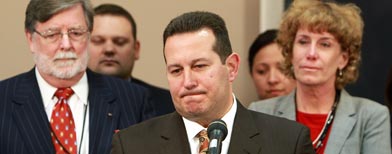
Defense attorney Jose Baez was criticized for his strategy, but the burden of proof wasn't on him. Weaknesses
Police in the Australian state of New South Wales are to be allowed to demand the removal of burqas and other face veils so they can identify people.
The state government approved the move late Monday after the high-profile recent case of a Muslim woman being acquitted when a judge ruled she could not be positively identified because was wearing a burqa.
"I don't care whether a person is wearing a motorcycle helmet, a burqa, niqab, face veil or anything else, the police should be allowed to require those people to make their identification clear," Premier Barry O'Farrell said.
"I have every respect for various religions and beliefs but when it comes to enforcing the law the police should be given adequate powers to make a clear identification."
Anyone who refuses to show their face could be jailed for up to a year or fined Aus$5,500 ($5,900).
The move comes in the wake of a case in November when a woman was sentenced to six months jail for falsely accusing police of forcibly trying to remove her burqa when she was stopped for a traffic offence.
But her sentence was quashed last month when a magistrate said he could not be 100 percent sure it was the same woman who made the complaint because officers were not able to see the face of the accuser.
New South Wales state Police Commissioner Andrew Scipione demanded a clarification of the law and O'Farrell said the new powers should help prevent a recurrence of such issues.
Police previously had the power to ask women to remove face veils during the investigation of serious offences, but not on more routine matters.
The wearing of full-face niqab veils by some Muslim women has become a contentious issue in parts of Europe, where France has banned them in public.
In New Zealand, Prime Minister John Key on Tuesday said Muslim women wearing veils should not face discrimination, after two Saudis were reportedly ordered off buses due to their attire.
The Islamic Council of New South Wales said it accepted O'Farrell's decision.
"If you're asked to do something by a police officer and it's legitimate, then you do it," council chairman Khaled Sukkarieh told ABC radio.
The Muslim Women's Association said it would prefer that a female police officer was on hand when the veils were removed, but if that happened then "nobody could really complain".
The Police Association of New South Wales welcomed the move, saying it was a loophole that had to be closed.
"It will provide clarity and certainty for both the public and for police officers," the union's acting president Pat Gooley said in a statement.
While Queensland state said it would not go down the same path, Western Australia indicated it may follow suit with the state's police minister meeting the police commissioner on the issue Tuesday.
"I'm concerned at the idea of police not having the power to request drivers to remove helmets or other face coverings for ID purposes at the roadside," WA Police Minister Rob Johnson said.
The Great American Novel The Film _Music ClipTwo
updated 01:55 am
 Latest omg! celebrity snaps
Latest omg! celebrity snaps  Check out all the latest showbiz news, gossip and photos on omg!
Check out all the latest showbiz news, gossip and photos on omg!  Who's snogging who in celebville?
Who's snogging who in celebville?

Focusing on nothing more than the bottom line means banks are causing huge problems.
My son ran up an unauthorised overdraft a couple of years ago - or, rather, he inadvertently exceeded his agreed overdraft limit by £200.
The bank slammed some usurious penalty charges on his account and the sum he owed soon multiplied to a figure that he couldn't possibly afford to repay. He tried to talk to the bank about repaying the original overdraft, plus appropriate interest, but it ignored him.
So instead he waited for the High Court ruling on whether banks should be allowed to charge whatever they like on unauthorised borrowing, hoping it would solve his problems. But it went against him - and many other thousands in the same boat. Meanwhile, the sum had escalated wildly into a four-figure debt.
His bank is our old friend Barclays, which is fast becoming the Ryanair of British banking when it comes to customer service - although I gather all the banks are at it.
No co-operation
Now, I accept that customers, like my son, who run up debts have only themselves to blame - it's all in the small print, blah, blah, blah. But my point is that he wanted to repay the original sum and tried to do so. The bank could have had its money back, if it had co-operated.
Instead, it has invented a ludicrous debt that it has no hope of seeing repaid.
More extraordinarily, Barclays sold the debt on to a credit agency some time ago. What is Kafka-esque in its absurdity here is that, in doing so, the bank has made an entirely notional sum of money into a real one. This debt never existed, other than in the fevered imagination of some clerks in the Bank of Lilliput.
By capitalising it and selling it on, this invented money has become commoditised. And there must be loads of it out there. I fully expect some wünderkind of the financial markets to securitise all this bogus debt and flog it to a US bank to fuel the next sub-prime housing boom.
Anyway, this means for us that a series of entertaining credit agents periodically phone up. The names of the agencies change weekly, as the debt is passed around the market, like the plate of cocktail sausages that no one wants at a party.
One spiv told my son that he'd knock 25% off the debt if he paid it off by credit card over the phone immediately. Unsurprisingly, he resisted this temptation, as there would have been no record of the agreement.
[See also: Man gets 'unfair' £20,000 credit card debt written off]
Financial charlatans
I fear that there may be some borrowers who do deal with these charlatans of the financial world. After all, they threaten that they're about to come round to your house and impound everything from your clothes to your pets in order to settle the debt.
This is nonsense. The Citizens Advice Bureau advises that under no circumstances should anyone ever respond to a telephone approach from a credit agent. That seems like sound advice.
But there are other factors at play too. These debt collectors phone and, first of all, ask you to identify who you are and where you live. Excuse me, do they really think we're that dumb? No one has the right to phone and demand information about you.
These giants of credit control, however, are evidently a few beads short of a full abacus. One phoned the other day. Apparently, they couldn't speak to me unless I identified myself. Fine by me.
A firm called RMA Partners, for example, told me I had to provide personal information for security purposes. I had to prove that I was who I said I was. I asked him to identify himself and to prove he was from the company he said he was, otherwise I couldn't deal with him "for security reasons".
There was silence at the other end. It was like a fuse had blown in his head. I wished him well and gently hung up.
But the problem is that the high street banks allow these agents to operate under the banks' brand names. I have had people on the line claiming that they are from Barclays. They are rude, aggressive and unprofessional.
Credit is really the issue. Does a bank like Barclays really think that these ethic-free operations do its brand and reputation any credit? But, then again, perhaps brand values and reputation have long since ceased to be a valid currency for our banks.
Reverend George Pitcher is a former industrial editor of the Observer. He is the Archbishop of Canterbury's secretary for public affairs and curate at St Bride's, Fleet Street.
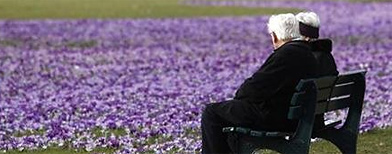
An expert on aging thinks doctors could have all the tools they need to "cure" getting old. Hotly debated subject
LONDON (Reuters) - If Aubrey de Grey's predictions are right, the first person who will live to see their 150th birthday has already been born. And the first person to live for 1,000 years could be less than 20 years younger.
A biomedical gerontologist and chief scientist of a foundation dedicated to longevity research, de Grey reckons that within his own lifetime doctors could have all the tools they need to "cure" aging -- banishing diseases that come with it and extending life indefinitely.
"I'd say we have a 50/50 chance of bringing aging under what I'd call a decisive level of medical control within the next 25 years or so," de Grey said in an interview before delivering a lecture at Britain's Royal Institution academy of science.
"And what I mean by decisive is the same sort of medical control that we have over most infectious diseases today."
De Grey sees a time when people will go to their doctors for regular "maintenance," which by then will include gene therapies, stem cell therapies, immune stimulation and a range of other advanced medical techniques to keep them in good shape.
De Grey lives near Cambridge University where he won his doctorate in 2000 and is chief scientific officer of the non-profit California-based SENS (Strategies for Engineered Negligible Senescence) Foundation, which he co-founded in 2009.
He describes aging as the lifelong accumulation of various types of molecular and cellular damage throughout the body.
"The idea is to engage in what you might call preventative geriatrics, where you go in to periodically repair that molecular and cellular damage before it gets to the level of abundance that ispathogenic," he explained.
CHALLENGE
Exactly how far and how fast life expectancy will increase in the future is a subject of some debate, but the trend is clear. An average of three months is being added to life expectancy every year at the moment and experts estimate there could be a million centenarians across the world by 2030.
To date, the world's longest-living person on record lived to 122 and in Japan alone there were more than 44,000 centenarians in 2010.
Some researchers say, however, that the trend toward longer lifespan may falter due to an epidemic of obesity now spilling over from rich nations into the developing world.
De Grey's ideas may seem far-fetched, but $20,000 offered in 2005 by the Massachusetts Institute of Technology (MIT) Technology Review journal for any molecular biologist who showed that de Grey's SENS theory was "so wrong that it was unworthy of learned debate" was never won.
The judges on that panel were prompted into action by an angry put-down of de Grey from a group of nine leading scientists who dismissed his work as "pseudo science."
They concluded that this label was not fair, arguing instead that SENS "exists in a middle ground of yet-to-be-tested ideas that some people may find intriguing but which others are free to doubt."
CELL THERAPY
For some, the prospect of living for hundreds of years is not particularly attractive, either, as it conjures up an image of generations of sick, weak old people and societies increasingly less able to cope.
But de Grey says that's not what he's working for. Keeping the killer diseases of old age at bay is the primary focus.
"This is absolutely not a matter of keeping people alive in a bad state of health," he told Reuters. "This is about preventing people from getting sick as a result of old age. The particular therapies that we are working on will only deliver long life as a side effect of delivering better health."
De Grey divides the damage caused by aging into seven main categories for which repair techniques need to be developed if his prediction for continual maintenance is to come true.
He notes that while for some categories, the science is still in its earliest stages, there are others where it's already almost there.
"Stem cell therapy is a big part of this. It's designed to reverse one type of damage, namely the loss of cells when cells die and are not automatically replaced, and it's already in clinical trials (in humans)," he said.
Stem cell therapies are currently being trialed in people with spinal cord injuries, and de Grey and others say they may one day be used to find ways to repair disease-damaged brains and hearts.
NO AGE LIMIT
Cardiovascular diseases are the world's biggest age-related killers and de Grey says there is a long way to go on these though researchers have figured out the path to follow.
Heart diseases that cause heart failure, heart attacks and strokes are brought about by the accumulation of certain types of what de Grey calls "molecular garbage" -- byproducts of the body's metabolic processes -- which our bodies are not able to break down or excrete.
"The garbage accumulates inside the cell, and eventually it gets in the way of the cell's workings," he said.
De Grey is working with colleagues in the United States to identify enzymes in other species that can break down the garbage and clean out the cells -- and the aim then is to devise genetic therapies to give this capability to humans.
"If we could do that in the case of certain modified forms of cholesterol which accumulate in cells of the artery wall, then we simply would not get cardiovascular disease," he said.
De Grey is reluctant to make firm predictions about how long people will be able to live in future, but he does say that with each major advance in longevity, scientists will buy more time to make yet more scientific progress.
In his view, this means that the first person who will live to 1,000 is likely to be born less than 20 years after the first person to reach 150.
"I call it longevity escape velocity -- where we have a sufficiently comprehensive panel of therapies to enable us to push back the ill health of old age faster than time is passing. And that way, we buy ourselves enough time to develop more therapies further as time goes on," he said.
"What we can actually predict in terms of how long people will live is absolutely nothing, because it will be determined by the risk of death from other causes like accidents," he said.
"But there really shouldn't be any limit imposed by how long ago you were born. The whole point of maintenance is that it works indefinitely."

The "ballerina chop" works your abs, thighs, and rear end -- all in one simple exercise. Try the 'tummy tucker,' too

The singer debuts two-tone hair, but her workout getup is even more of a head-turner. Scary, spikey heels
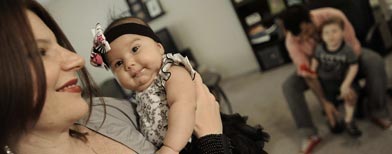
Having a baby outside of a hospital is no longer "a hippie thing," but doctors have concerns. Who's staying home
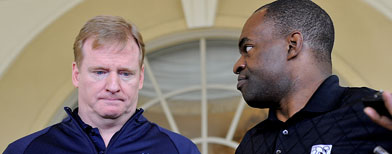
A portion of the season could be lost if owners and players don't come to an agreement soon. The 'drop-dead' date

An elaborate home cinema in Florida sports lavish seating on top of a pirate deck. See the entire setup

Atlantis's final launch marks the end of a program that was costly in more ways than one. Spectacular success, failures

Begin by dropping the worst rule in baseball — and stop running it like Little League, a writer says. HR Derby tweak

Strong, gusty winds mess up the singer's stylish tresses at a Fourth of July concert. Watch the video
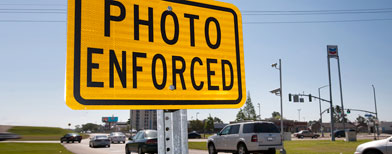
Cities too often use the systems as just another way to generate revenue, say critics. Backlash gaining steam

A man's idle camera becomes more than a toy for one enterprising animal.Fascinated by reflection
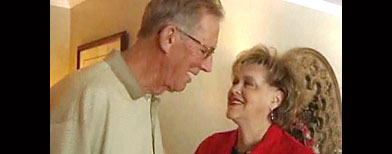
Dianne Kidd was 14 when she flushed her sweetheart's keepsake down the toilet by mistake. Where it ended up

Some are easy to access, but this dazzling rock formation in Arizona requires special effort. How to visit it

Jamie Foxx will play a freed slave trying to recover his wife in Quentin Tarantino's new film. Who turned the part down

The Colorado River beach in the Grand Canyon makes for an unforgettable summer destination. More top picks

Arizona's Darnell Dockett is the latest in string of athletes to bring home an unusual animal friend. Meet 'Nino'

North America's lowest temperature doesn't come close to the record spot.How frigid it gets on other planets

A joyful Thomas Levet jumps in a lake to celebrate his win at the French Open.Why he may regret it
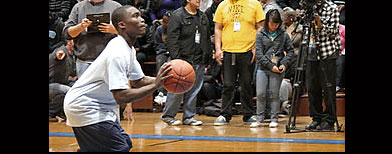
Allen Geui wins $40,000 in a free-throw shooting contest, but doesn’t keep a dime for himself. Tear-jerking gesture
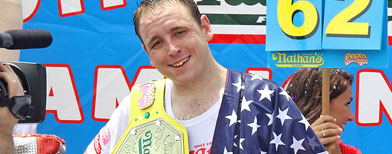
The hot-dog-eating champ has a plan to counteract the effects of downing 20,000 calories in one day. Food that helps
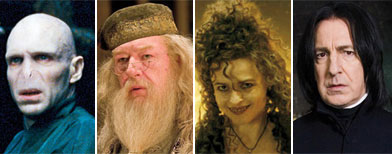
Helena Bonham Carter captured the heart of a major ‘80s star on a hit TV show. Actor who dated 2 castmates

Jennifer Aniston just got new ink but made one big mistake, says an expert.How 'Twilight' star did it right
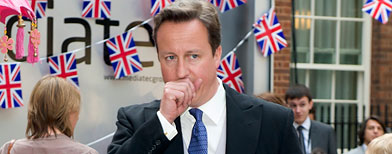
British PM David Cameron is sickened by claims against tabloid News of the World. Private eye apologizes

After withdrawing from his third straight event, Tiger should take the rest of 2011 off. Writer: His game in major trouble

A figure shrouded in mystery emerges in the death of the most-wanted terrorist.In room, but not in famous photo
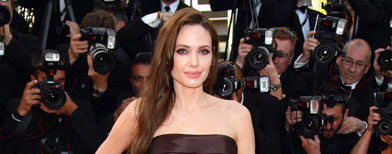
She earned an estimated $30 million last year, but so did another surprise actress. Bullock's big drop

Kids at basketball camp have no trouble spotting Atlanta's Joe Johnson in his glowing, massive ride. See it

Everyone knows to avoid fries with a burger, but one chain's baked potato is dangerous too. One side: 1,400 calories

Verizon is joining AT&T and T-Mobile in putting monthly limits on data usage.How much you really need

The No. 1 college major is also popular with employers that are looking for job candidates. Six potential careers

One state known for stunning vistas, zero income tax, and a 4% sales tax leads the list. Florida isn't in top 5

The verdict surprises legal analysts and spares the 25-year-old from facing the death penalty. Guilty of misdemeanors

San Francisco's unusual competition will offer some cool prizes to one lucky family. 'World Championship Baby'

This tiny house's floor-to-ceiling, wall-to-wall shelves can hold 10 tons of books.Space even above the bathtub

One woman dropped four dress sizes by adding on veggies to the foods she loved. How to handle a fast-food craving

Justin Bieber's appearance on Vanity Fair is the publication's worst seller in the past 12 years. Not his first dud
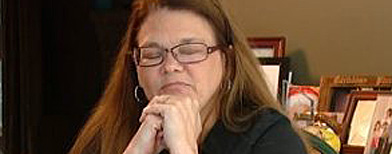
A year later, Jackie Kennedy struggles with the memories of the fatal accident.Activities she still can't face

A 69-year-old man wows a minor-league baseball crowd by being shot from a cannon. See how far he flies
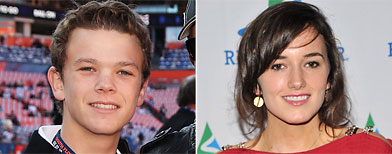
Rob Lowe's 17-year-old son heads to Washington while a Kennedy grandchild lands in Hollywood. Big breaks
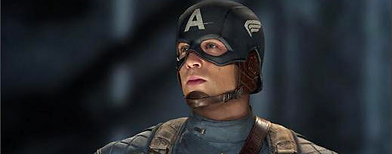
The name of "Captain America: The First Avenger" is being altered in three countries. Anti-American concerns

Americans love to order burgers, Chinese, and pizza, but which has the most outlets? Little-known facts
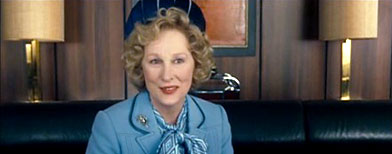
The actress adopts the former British prime minister’s toughness and accent in a new clip. Oscar-worthy?

Los Angeles police hope to test new laws aimed at punishing unscrupulous photographers. Aniston's connection
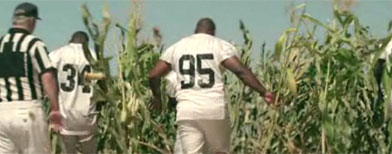
Football players join "Twilight" actor Taylor Lautner in a hilarious video about the lockout. See who plays Goodell

It's often very easy for a savvy intruder to access your personal voicemail.Smartphones especially vulnerable
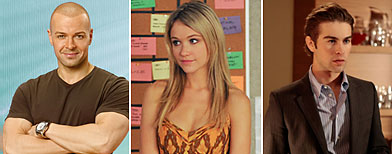
Many submissions for the awards show seem to have more to do with ego than talent. Joey Lawrence for best actor?

A smart alibi makes all the difference when it comes to playing hooky.'Embarrassing' one that's been used

These quaint destinations offer a different kind of getaway than an ocean resort. Find out where to eat

The government will soon make its first retreat from housing, but there are fears it could lower prices. Loans affected

The recovery is subdued, but everyone should be thankful that none of these threats materialized. Still a concern?

The new rankings look at the actual amount the average student pays.Less than $2,000 per year at some

These yummy twists on the traditional soup will wow your family and shrink your food budget. Easy and cheap

These eight tips will help you exude confidence at work and in your daily life.Step one: Stand when talking on phone

French farmers create animated crop circles that look and move like parts on a real bike. Watch precise coordination

The new twist will have fans scrambling to grab expensive orbs stitched with 24-karat gold panels. See them
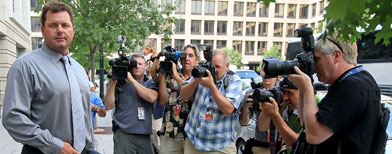
The embattled ex-pitcher wanted to leave the scene as onlookers gawked and took photos. Why he couldn't flee

Whether your hours will increase or decrease depends on if you’re a high- or low-level employee. Reasons

Deron Williams will have a new gig next season if the NBA lockout continues.Why it could cost him millions

The first-time mom appears in public eight weeks after giving birth to twins.Sports a hoodie

The Yankees star is expected to debut a unique pair of cleats as he approaches 3,000 hits. Cool personal touches
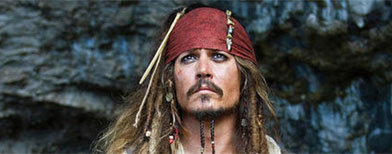
The actor has raked in a mind-blowing sum for playing Jack Sparrow in four films. Fifth movie in the works
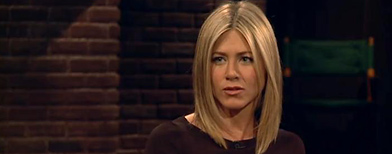
Jennifer Aniston says a surprising movie role helped her deal with her split from Brad Pitt. 'I was like, why not?'

The device will feature a revamped design and upgraded components, sources say. What to expect

Most people are dumbfounded when they are invited on a hike with the Facebook chief. 'Totally surreal'

A mother bear fatally mauls a man in the first attack of its kind at Yellowstone since 1986. What will happen to bruin

In 2008, John McCain announced his running mate and changed one teen's life forever. On trademark of name

A giant thunderstorm covering an area as wide as the Earth has been unfolding since December. What's causing it

Alize Cornet is battling the top-ranked women's tennis player in the world when something unusual happens. Watch
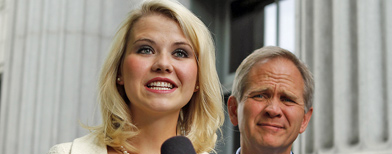
The former abduction victim steps back into the spotlight in an effort to help others. Qualifications questioned

These jobs offer solitude and fewer distractions to employees who like to work solo. Degrees you'll need
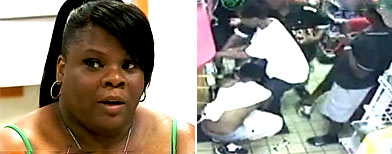
A mother watching TV news is shocked by a surveillance video — and who she spots in it. Her message to parents

One cozy beach cottage features only 280 square feet, but offers enviable views and location. Surprising price tags

Obama puts controversial Social Security and Medicare cuts on the table in debt talks. What he wants in return
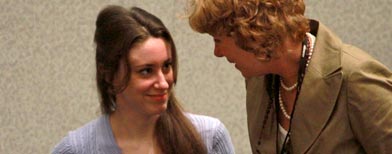
After being found not guilty in the death of her daughter, Anthony learns she will be free in under a week. Details

Cut costs by using coffee filters and shower curtains for something they weren't intended for. More ideas
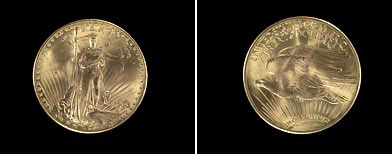
When a jeweler's heirs ask the U.S. Treasury to authenticate 10 coins, the feds seize them all. Staggering value
Innocence Project
40 Worth St., Suite 701
New York, NY 10013
info@innocenceproject.org
212.364.5340
To submit a case to the Innocence Project
http://www.innocenceproject.org/know/conviction/About-Kenny-Waters.php
http://www.innocenceproject.org/know/conviction/About-Betty-Anne-Waters.php
http://www.innocenceproject.org/know/non-dna-exonerations.php
As
the pace of DNA exonerations has grown across the country in recent
years, wrongful convictions have revealed disturbing fissures and trends
in our criminal justice system. Together, these cases show us how the
criminal justice system is broken – and how urgently it needs to be
fixed.
We should learn from the system’s failures. In each case
where DNA has proven innocence beyond doubt, an overlapping array of
causes has emerged – from mistakes to misconduct to factors of race and
class.
Countless cases
Those exonerated by
DNA testing aren’t the only people who have been wrongfully convicted in
recent decades. For every case that involves DNA, there are thousands
that do not.
Only a fraction of criminal cases involve biological
evidence that can be subjected to DNA testing, and even when such
evidence exists, it is often lost or destroyed after a conviction. Since
they don’t have access to a definitive test like DNA, many wrongfully
convicted people have a slim chance of ever proving their innocence.
Common Causes
Here you will find further information about seven of the most common causes of wrongful convictions:
These
factors are not the only causes of wrongful conviction. Each case is
unique and many include a combination of the above issues. Review our
case profiles to learn how the common causes of wrongful convictions
have affected real cases and how these injustices could have been
prevented.
To stop these wrongful convictions from continuing, we must fix the criminal justice system. Click here to learn about Innocence Commissions,
a reform that can help identify and address the fundamental flaws in
the criminal justice system that lead to wrongful convictions.
The chart below represents contributing causes confirmed through Innocence Project research. Actual numbers may be higher, and other causes of wrongful convictions include government misconduct and bad lawyering.

Click for previous examination of cases based on other criteria.
The Innocence Project is not equipped to handle case applications or
inquiries by email or over the phone. All case submissions and follow-up
correspondence will be handled by mail or overnight delivery services
only.
If you are seeking legal assistance, please read the following guidelines for submitting your case.
All
cases for consideration should be mailed (to the address above) with a
brief factual summary of the case, including the specific charges and
convictions and a list of the evidence used against the defendant. No
other documents should be submitted for initial review. The Innocence
Project is not equipped to handle telephone or electronic (email)
applications.
The Innocence Project only accepts cases on
post-conviction appeal in which DNA testing can prove innocence. If the
case does not involve biological evidence or DNA, visit the Other
Innocence Organizations page to see if there is a program in your area
that provides broader legal and investigative assistance.
Click here to join our online community by signing up for our e-mail newsletter.
| Kenny Waters | ||
 |
Incident Date: 5/21/80 Jurisdiction: MA Charge: Murder, Robbery Conviction: Murder, Robbery Sentence: Life |
Year of Conviction: 1983 Exoneration Date: 6/19/01 Sentence Served: 18 Years Real perpetrator found? Not Yet Contributing Causes: Informants/Snitches Compensation? Yes |
The Innocence Project provides pro bono legal representation on behalf of people seeking to prove their innocence post-conviction. Since its inception in 1992, the Innocence Project has only taken cases where DNA testing can prove innocence. For more on our criteria for taking cases and the process for submitting a case for consideration, click here.
In some rare circumstances, however, the Innocence Project has helped exonerate clients through evidence other than DNA testing. We often have to close cases because the biological evidence is missing or destroyed, making DNA testing impossible. In some of those cases, strong evidence of innocence is discovered during the search for biological evidence, and we are able to secure our clients' freedom without DNA testing. In other cases, DNA test results alone are not enough to free our clients, but can help exonerate people when coupled with other evidence of innocence. In all of these cases, new evidence of innocence resulted in our clients' convictions being vacated and indictments against them being dismissed, fully exonerating them.
These cases underscore a critical point: DNA testing alone cannot overturn most wrongful convictions. In fact, experts estimate that DNA testing is possible in just 5-10% of all criminal cases. That is why a growing number of organizations in the Innocence Network handle cases regardless of whether DNA testing is possible. For a directory of these organizations, click here.
Below is a list of five Innocence Project cases, with links to full profiles, in which clients were exonerated through evidence other than DNA testing.
| Ralph Armstrong | ||
|
Incident Date: 09/02/1984 Jurisdiction: WI Charge: First-degree murder, first-degree sexual assault Conviction:First-degree murder, first-degree sexual assault Sentence: Life plus 16 years |
Conviction Date: 03/24/81 Exoneration Date: 08/19/09 Sentence Served: 25.5 Years Real perpetrator found?No Contributing Causes: Government Misconduct, Eyewitness Misidentification, Unvalidated or Improper Forensic Science Compensation? Not Yet |
|
| Levon Brooks | ||
 |
Incident Date: 9/15/90 Jurisdiction: MS Charge:Capital Murder, Sexual Battery Conviction:Capital Murder, Sexual Battery r Sentence: Life |
Conviction Date: 1/20/92 Exoneration Date:03/13/2008 Sentence Served:16 Years Real perpetrator found?Yes Contributing Causes: Government Misconduct, Unvalidated or Improper Forensic Science Compensation? Not Yet |
| Barry Gibbs | ||
 |
Incident Date: 11/04/86 Jurisdiction: NY Charge: Second-degree murder Conviction:Second-degree murder Sentence: 25 Years to Life |
Conviction Date: 03/25/88 Exoneration Date:9/29/05 Sentence Served:17.5 Years Real perpetrator found?No Contributing Causes: Government Misconduct, Eyewitness Misidentification, Informant / Snitch Compensation? Yes |
| Paul House | ||
 |
Incident Date: 7/13/1985 Jurisdiction: TN Charge: First-degree murder Conviction:First-degree murder Sentence: Death |
Year of Conviction: 1986 Exoneration Date:05/12/099 Sentence Served: 22 Years Real perpetrator found?No Contributing Causes: Unreliable/Limited Science, Forensic Science Misconduct, Bad Lawyering Compensation? Not Yet |
| Walter Swift | ||
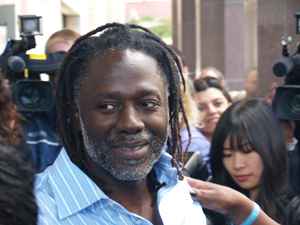 |
Incident Date: 09/02/1984 Jurisdiction: MI Charge: 1st degree criminal sexual conduct, robbery Conviction:1st degree criminal sexual conduct, robbery Sentence: 20-40 Years |
Conviction Date: 11/10/82 Exoneration Date: 5/21/08 Sentence Served: 25.5 Years Real perpetrator found?No Contributing Causes: Eyewitness Misidentification, Unvalidated or Improper Forensic Science, Government Misconduct, Bad Lawyering Compensation? Not Yet |
 The
Innocence Project, the Mid-Atlantic Innocence Project and Hogan Lovells
US LLP is filing legal papers before the Virginia Court of Appeals
today asking the court to exonerate a Richmond man who has been
incarcerated nearly 27 years for three rapes that DNA and other evidence
now show were committed by the notorious “Black Ninja” rapist. After
an extensive investigation that included DNA testing, an exhaustive
review of the evidence and polygraph tests, Richmond Commonwealth’s
Attorney Michael Herring and Henrico Commonwealth’s Attorney Wade Kizer
are both calling for Mr. Haynesworth’s exoneration and return to
freedom. Virginia Attorney General Ken Cuccinelli has also announced
that he is supporting the writ seeking a declaration of innocence.
The
Innocence Project, the Mid-Atlantic Innocence Project and Hogan Lovells
US LLP is filing legal papers before the Virginia Court of Appeals
today asking the court to exonerate a Richmond man who has been
incarcerated nearly 27 years for three rapes that DNA and other evidence
now show were committed by the notorious “Black Ninja” rapist. After
an extensive investigation that included DNA testing, an exhaustive
review of the evidence and polygraph tests, Richmond Commonwealth’s
Attorney Michael Herring and Henrico Commonwealth’s Attorney Wade Kizer
are both calling for Mr. Haynesworth’s exoneration and return to
freedom. Virginia Attorney General Ken Cuccinelli has also announced
that he is supporting the writ seeking a declaration of innocence.• Davis committed his crimes either in the early morning or early evening.In the papers that will be filed today, Haynesworth asks the court to grant him a Nonbiological Writ of Actual Innocence. Even though his petition is supported by the Attorney General and both Commonwealth’s Attorneys now believe he is innocent, Haynesworth will likely remain incarcerated while the court decides the case. There are no mandatory deadlines for the court to reach a decision.
• Davis would generally approach his victims casually on the street and then force them to a secluded area.
• All of Davis’ victims were white females between 15 and 30. (According to U.S. Department of Justice data only 12% of forcible rapes are committed by perpetrators who rape women of other races. http://bjs.ojp.usdoj.gov/content/pub/ascii/SOO.TXT /)
• Davis robbed each of his victims, usually before sexually assaulting them.
• Davis typically engaged in the same sex acts with his victims.
• Davis was unusually talkative during his attacks.
• All of Davis’ attacks occurred in close proximity. The crimes that we now know he committed in the beginning of 1984 occurred within a five block radius of his then address on National Street in the East End of Richmond. Most of his later attacks occurred further west in the Fan District and the Museum District, consistent with the fact that he married and moved to Parham Road in Henrico. His wife worked at 2900 Kensington Avenue in Richmond, which is in the Fan District.
• Davis was armed during his attacks, usually with a knife. The attacker in the Henrico case used a gun but told his victim that he usually used a knife, and 36 hours later the attacker in the Richmond case matching the same description used a gun.